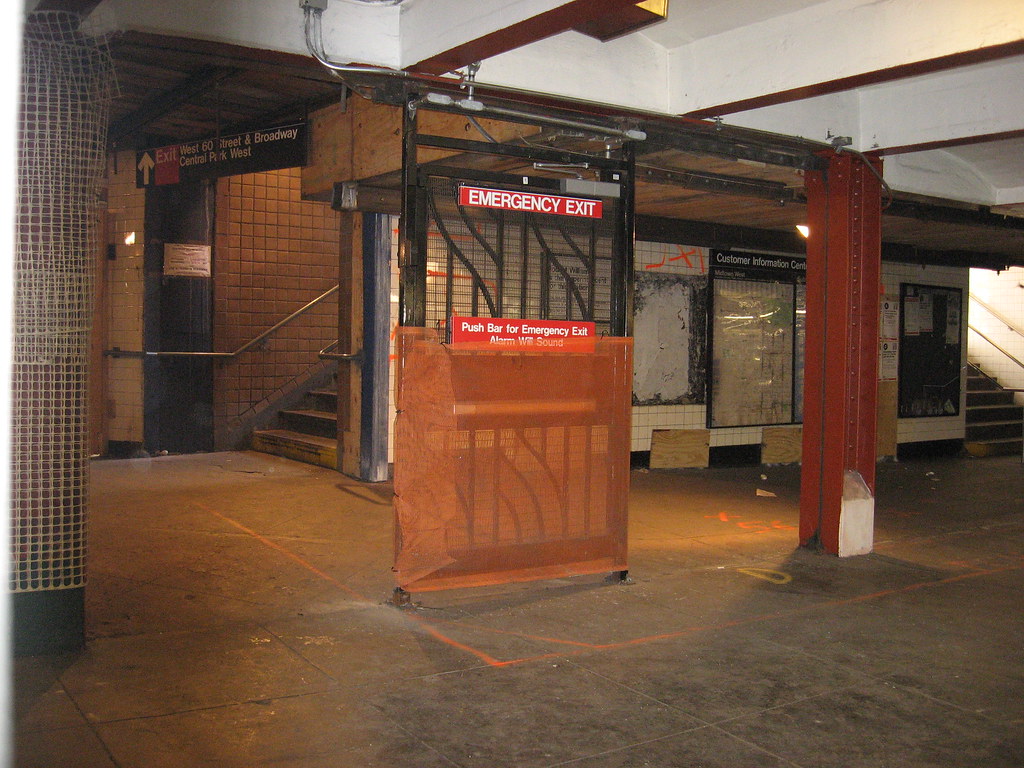As the city looks to private operators to replace lost bus routes, the first of the Taxi & Limousine Commission’s six commuter van routes will debut on Monday with the rest to follow in a week, The Post reported today. According to Tom Namako, the first of the pilot routes will be a van that replaces the Q74 service in Queens, and it will debut on the 13th. On Monday, September 20, vans will start running along the former B23, B71, B39 and Q79 routes.
The city has yet to announce pick-up locations or frequency of service for these routes, but The Post says the vans will not operate as frequently as buses did. The vehicles themselves will hold 16-20 passengers and charge a flat fare of $2 per ride. Riders, says Namako, will be able to negotiate with the driver over drop-off locations “as long as it’s in the general direction of the van.”
Finally, as an odd ending to an ongoing saga, the TWU has dropped its plans to operate its own TLC-licensed van with unionized bus drivers. The union had recently lost its lawsuit challenging the city’s legal ability to operate this privatized program, and more than 100 laid-off bus drivers were recently rehired. The TWU did not provide me with a comment by press time, but the Daily News via Twitter reports that the union thinks the idea is “self-defeating.” We can only speculate as to why they came to this realization so close to the pilot’s launch.

 As the Second Ave. Subway chugs ahead late and over budget, the MTA Inspector General says that work slower and more expensive than anticipated on the utilities underneath the avenue is to blame for the project’s rising costs, The New York Times reported this morning. In a letter to Manhattan borough president Scott Stringer, MTAIG Barry Kluger said that the utilities relocation work has taken six months longer than expected and will cost $130 million higher than initial estimates.
As the Second Ave. Subway chugs ahead late and over budget, the MTA Inspector General says that work slower and more expensive than anticipated on the utilities underneath the avenue is to blame for the project’s rising costs, The New York Times reported this morning. In a letter to Manhattan borough president Scott Stringer, MTAIG Barry Kluger said that the utilities relocation work has taken six months longer than expected and will cost $130 million higher than initial estimates. 

 The signs presenting the overview of all system diversions aren’t the only changes Transit is planning to unveil. Included in the redesign are new displays for individual line reroutings that pop up at the last minute. The current signs,
The signs presenting the overview of all system diversions aren’t the only changes Transit is planning to unveil. Included in the redesign are new displays for individual line reroutings that pop up at the last minute. The current signs, 
 For the city’s neighbors to the west, Tuesday was a big day in the effort to restore a sense of peace, quiet and dignity to the often tiresome quiet for New Jersey Transit launched its
For the city’s neighbors to the west, Tuesday was a big day in the effort to restore a sense of peace, quiet and dignity to the often tiresome quiet for New Jersey Transit launched its 
 Earlier this summer, word leaked out that the MTA may
Earlier this summer, word leaked out that the MTA may 


 First, Transit has restored express service along the 5 through March 2011. Beginning on Tuesday, 5 trains during rush hour will run express in peak directions — southbound in the AM; northbound in the PM — between East 180th Street and 3rd Ave.-149th Street. The 2 will continue to serve all stops at all times.
First, Transit has restored express service along the 5 through March 2011. Beginning on Tuesday, 5 trains during rush hour will run express in peak directions — southbound in the AM; northbound in the PM — between East 180th Street and 3rd Ave.-149th Street. The 2 will continue to serve all stops at all times. Meanwhile, the Rockaways are gearing up to see some service changes as well. Per Transit, the Manhattan-bound A platforms at Beach 25th, Beach 44th and Beach 67th Streets are scheduled to close for rehabilitation at 12:01 a.m. on Tuesday, September 7, 2010 until the fall of 2011. Also, the Rockaway Park-bound A/S platforms at Beach 90th and Beach 105th Streets will close until spring 2011. This work includes installing new canopies over the stairs and platforms, repairing the platforms, columns, stairs and tracks, redesigning area around station booth for easier access to trains, replacing the mezzanine and platform floors, replacing the stations’ lighting and platform edges, and installing a new, high-quality public address system. And so it goes.
Meanwhile, the Rockaways are gearing up to see some service changes as well. Per Transit, the Manhattan-bound A platforms at Beach 25th, Beach 44th and Beach 67th Streets are scheduled to close for rehabilitation at 12:01 a.m. on Tuesday, September 7, 2010 until the fall of 2011. Also, the Rockaway Park-bound A/S platforms at Beach 90th and Beach 105th Streets will close until spring 2011. This work includes installing new canopies over the stairs and platforms, repairing the platforms, columns, stairs and tracks, redesigning area around station booth for easier access to trains, replacing the mezzanine and platform floors, replacing the stations’ lighting and platform edges, and installing a new, high-quality public address system. And so it goes.










